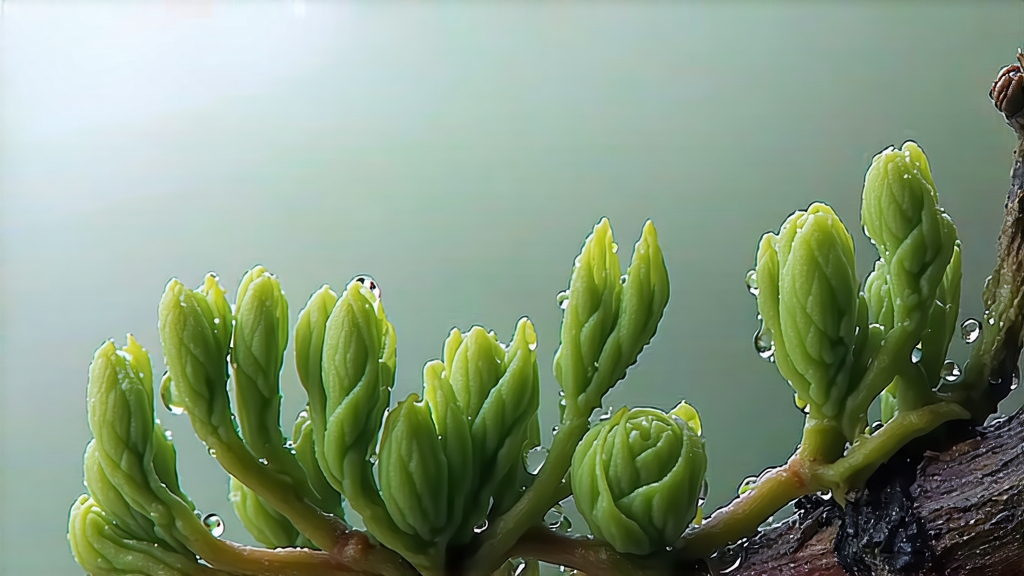
Tucked between the mist-laden cliffs of Dongting Mountain in Jiangsu Province and the vast, fish-teeming expanse of Lake Tai, Biluochun—literally “Green Snail of Spring”—has captivated Chinese emperors, poets, and now a growing circle of global tea lovers for more than a thousand years. Unlike the sword-straight elegance of Longjing or the downy simplicity of white-haired Silver Needle, Biluochun seduces with its tiny, spiral-shaped leaves that resemble miniature jade snails, a visual metaphor that inspired its name during the Qing dynasty when the Kangxi Emperor declared it one of China’s ten most famous teas. Yet beyond its charming silhouette lies a microcosm of Chinese green-tea craftsmanship: maritime terroir, perilously early picking windows, and a firing technique so intimate that the tea master’s bare hands become the wok’s only thermostat. This article invites international drinkers to journey from leaf to liquor, decoding the history, cultivars, crafting rituals, and tasting lexicon that elevate Biluochun to the pinnacle of spring-flush green tea.
Historical whispers trace Biluochun’s origin to the Tang dynasty (618-907 CE), when it was known by the humbler name “Xia Sha Ren Xiang”—“Scary Fragrance”—after local farmers claimed its intoxicating aroma frightened monks during meditation. By the late Ming period, improved firing methods coaxed the leaf into its signature tight spiral, and the tea entered tribute status, traveling northward on canal boats to the Forbidden City. European missionaries stationed in Suzhou during the 18th century shipped small chests to Paris and Vienna, where salon society mistook its fruity perfume for bergamot-scented black tea, inadvertently birthing the first Western confusion between Chinese green and flavored black tea. Modern archival work by the Jiangsu Tea Research Institute confirms that the original mother trees still cling to the basalt outcrops of Dongting’s eastern ridge, their genetic fingerprint conserved in a protected enclave no tourist map discloses.
Although “Biluochun” is legally protected under China’s Geographic Indication system, the market offers three distinct terroir-driven styles. Core-zone Dongting Mountain Biluochun, picked before Qingming festival from a narrow band between 100–300 m elevation, delivers the fabled “marine minerality” thanks to morning lake mists that carry dissolved calcium and magnesium. Western Hills Biluochun, grown on the limestone-rich hinterland of Wuzhong District, trades salinity for a lilac-like floral lift. Finally, the Wannan “migration” style, produced in southern Anhui with Dongting clonal cuttings, presents a rounder, chestnut-sweet cup for drinkers who prefer gentler astringency. Purists insist that only the first category deserves the imperial moniker, yet each expression illuminates how soil, diurnal temperature swing, and humidity rewrite the same genetic script into different flavor dialects.
The crafting choreography begins at 4:30 a.m., when pickers—mostly women wearing headlamps—pluck the “one bud with one unfolding leaf” standard, a fragile compromise between aromatics and body. By 7:00 a.m. the harvest must reach the village workshop, because enzymatic browning waits for no one. Withering is skipped entirely; instead, the leaves are spread on bamboo trays positioned directly above the brick stoves used to boil breakfast water, allowing a short, softening steam bath that reduces brittleness. The true magic happens in a 60-centimetre-diameter iron wok preheated to 180 °C. A single master controls 250 grams of leaves, employing a three-step hand ballet: “grab and shake” to drive off grassy volatiles, “rub and twist” to rupture surface cells and initiate the spiral, and “press and dry” to lock in fragrance while reducing moisture to 6 %. No thermometer guides him; skin sensitivity calibrated over decades tells him when the wok edge cools to 90 °C and needs another ladle of charcoal. The entire fry takes precisely 15 minutes, after which the still-warm leaves are transferred to a reed basket where they curl into tight spirals as they cool, a kinetic sculpture captured in real time.
To brew Biluochun respectfully, one must first accept its delicacy. A 200 ml Duanni clay or glass vessel is ideal; porcelain accentuates high notes but can exaggerate